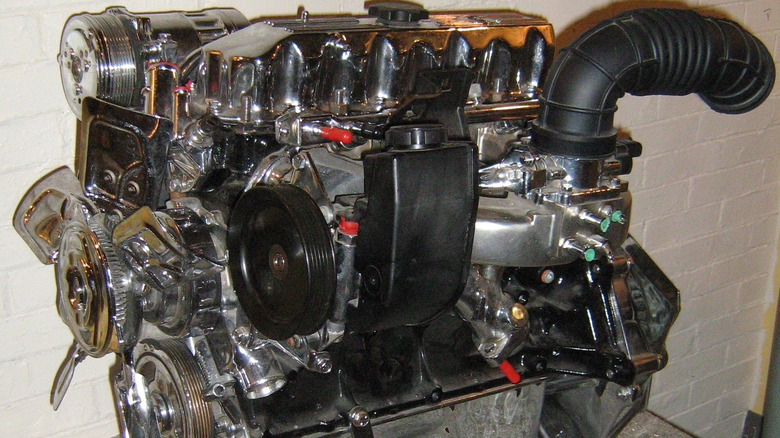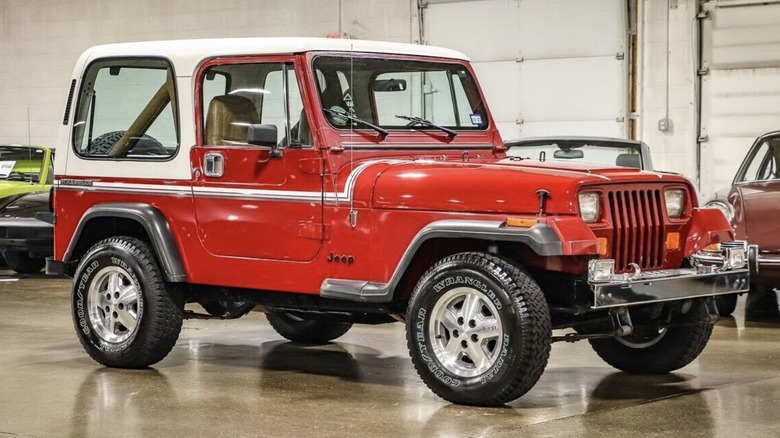Here's What Made Jeep's 2.5L Engine So Reliable
The Jeep brand has a long history dating back to World War II, and its engines have evolved from those early flathead four-cylinders to an array of modern powerplants that produce as much as 470 horsepower. Along the way, the Jeep badge has changed hands several times; the brand has been owned by Willys Overland, Kaiser, AMC, Chrysler, and now its parent company, Stellantis.
Jeeps of the 1980s and '90s are known for their particularly reliable engines, most notably the 4.2 and 4.0-liter inline six-cylinder motors. During that same period, Jeep also produced a 2.5-liter inline four-cylinder that enjoyed the same favorable reputation as its larger brothers. The 2.5-liter four first appeared in Cherokee and CJ7 models in 1984 and was transferred over to the Wrangler when Chrysler bought the Jeep brand in 1987. Early 2.5-liter fours produced 120 horsepower and 140 lb-ft of torque while offering Wrangler drivers a respectable 16 mpg city and 19 highway.
The 2.5L engine can last 200,000 miles or more
The 2.5-liter four-cylinder Jeep engine shared some design elements and internal components with the 4.0-liter six but was designed specifically for the vehicles it went into. The two engines had the same bore, but the four-cylinder had a shorter stroke and actually predated the six-cylinder version by three years. Roy Lunn, who joined Jeep in 1971 as its chief engineer, was quoted by author Robert Ackerson in his 2006 book about the history of the Jeep CJ.
"Unlike most engines available today," Lunn said, "ours was not designed originally for passenger cars and then adapted for trucks. That's the reason that performance and durability were of such prime consideration from the very beginning." While it may not be the most powerful engine ever produced, this motor is notorious for lasting well beyond 200,000 miles, and some owners report putting upwards of 300,000 miles on their 2.5-liter-equipped Jeeps.
Like the 4.0 six-cylinder Jeep engine, part of the 2.5-liter four's reliability can be credited to the simple valvetrain design. Both engines used a system of hydraulic lifters, connecting rods, and rocker arms instead of an overhead camshaft. It remained in the Wrangler and Dodge Dakota pickups until 2002 when Jeep switched to the 2.4-liter four-cylinder PowerTech engine.

